Hi-hats can captivate your listeners and keep them addicted.
When used expertly, they can infuse your tracks with rhythm, energy, and a unique sonic signature.
However, if you’re just recycling the same old techniques and patterns, your beats will become predictable and boring.
That’s why we’re going to dive deep to provide you with pro tips, expert insights, and innovative methods to ensure your hi-hats shine.
And, in turn, make your tracks stand out in a major way.
In today’s article, we’ll be breaking down:
- Evolution of Hi-Hats in Production ✓
- Impact on Track Identity ✓
- Anatomy and Time Divisions ✓
- Crafting Distinct Hi-Hat Patterns ✓
- Synthesis & Sound Shaping ✓
- Techniques For All Genres ✓
- Rhythm, Accent, and Dynamics ✓
- Advanced Techniques & Mixing ✓
- EQ and Compression Tips ✓
- Bonus: Live Drumming with Hi-Hat Pedals ✓
By the end of this article, your hi-hats will be far from mundane.
Instead, they’ll be captivating, intricate, and expertly integrated 一 making every track an intriguing musical journey.
So, let’s dive in…
Table of Contents
Hi-Hats: More Than Just a Beat
Every music producer, like yourself, understands the imperative role of hi-hats in digital production.
They’re not just rhythm-keeping cymbals 一 they’re a transformative force in your mix.
Let’s start by exploring the true magic of hi-hats.
-
Evolution of Hi-Hats in Digital Production

Hi-hats have undergone a tremendous transformation since their inception.
Traditionally, hi-hats are a pair of cymbals that sit on a stand and are controlled by a pedal.
Fast forward to the digital age, and these cymbals have found a new home in our DAWs (Digital Audio Workstations).
In the early days of electronic music, hi-hats were primarily sampled from real drums and provided a distinct sound.
The Roland TR-808, for example, introduced synthesized hi-hats that forever changed the game.
These hi-hats didn’t attempt to recreate an acoustic sound but rather embraced their electronic nature.
Soon, genres like hip-hop, techno, and house began incorporating these unique hi-hat cymbals 一 taking them from the background to the most recognizable part of a track.
The ability to manipulate their sound in the digital realm added layers of creativity that were once unimaginable, like changing their:
- Pitch
- Tone
- Decay
Today, digital music producers have a plethora of hi-hat samples and synthesis methods at their fingertips.
The evolution continues, with producers pushing boundaries and crafting their unique hi-hat sounds; leading to new sub-genres and styles.
-
The Impact of Hi-Hats: Making Your Tracks Shine
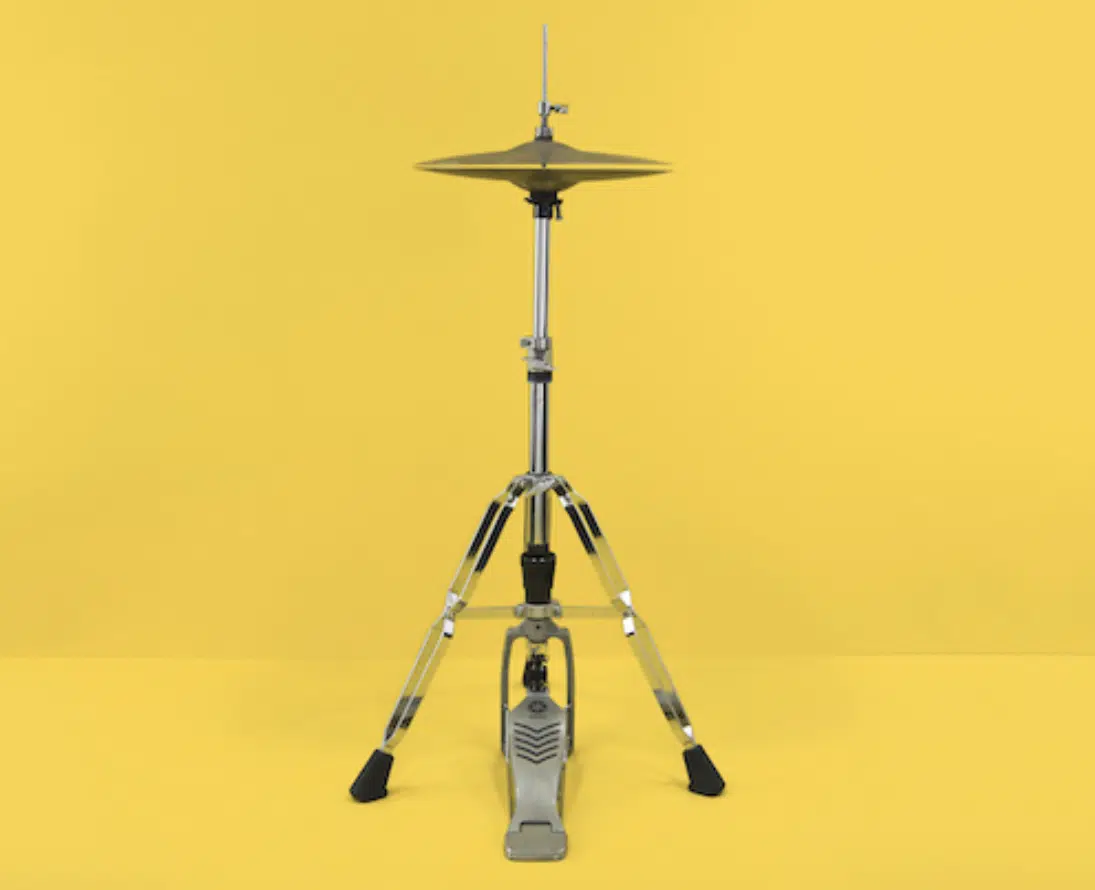
The rhythmic shuffle of hi-hats can drastically define a track’s feel.
Consider the trap genre, where the rapid-fire succession of hi-hats creates an instantly recognizable signature.
But it’s not just about speed…
The dynamic range in playing hi-hats can provide a unique, desirable texture.
The contrast between loud, accented hi-hats and their softer counterparts can create depth in a beat 一 making it more engaging to the listener.
Furthermore, by panning hi-hats or using stereo widening techniques, you can introduce a spacious feel to your track.
This sense of space can be pivotal in genres like ambient or chillout, where the mood is everything.
In essence, never underestimate the hi-hat’s ability to shape your track’s identity.
By being intentional in your hi-hat pattern choices and sound design, you can craft a sonic identity that’s uniquely yours.
Which we will cover throughout the article.
Speaking of sound design, if you’re eager to learn the most groundbreaking (and exclusive) sound design secrets in the music industry, we’ve got you covered.
-
The Origin of Synthesized Hi-Hats: The Roland Drum Machine Revolution
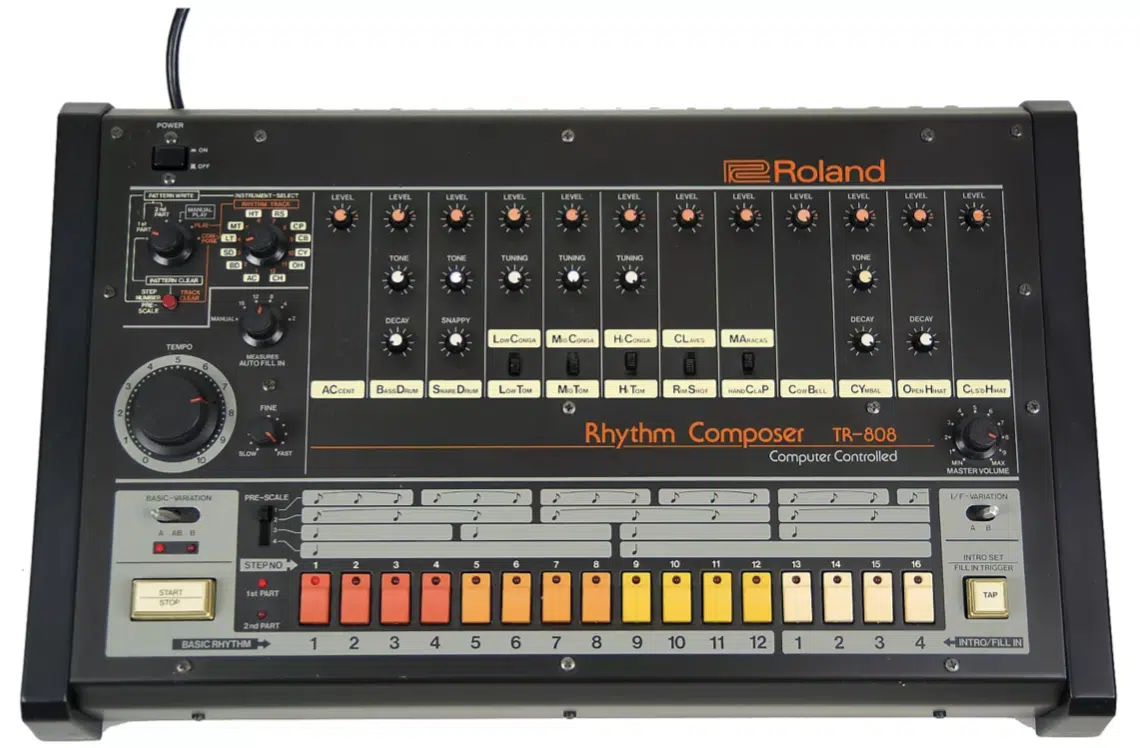
The inception of synthesized hi-hats can be traced back to machines like the iconic Roland TR-808.
This drum machine wasn’t just a product; it sparked a revolution.
Roland’s synthesized sounds (especially the hi-hats) gave artists new textures and rhythmic patterns to play with.
Which, in turn, propelled genres like techno and electro into the limelight.
The unique chick and shimmer of the 808’s hi-hats became sought-after sounds, and even today, they are emulated in countless tracks across various genres.
Over time, more advanced drum machines and synthesizers were introduced.
However, the essence and character of those early synthesized hi-hats remain a cornerstone of electronic music.
Dive into the Anatomy of Hi-Hats
The world of hi-hats is as intricate as it is fascinating.
From understanding the nuances between closed and open hi-hats to leveraging untraditional time divisions, there’s so much to unpack…
-
Closed Hi Hats vs. Open Hi-Hats: What’s The Difference?
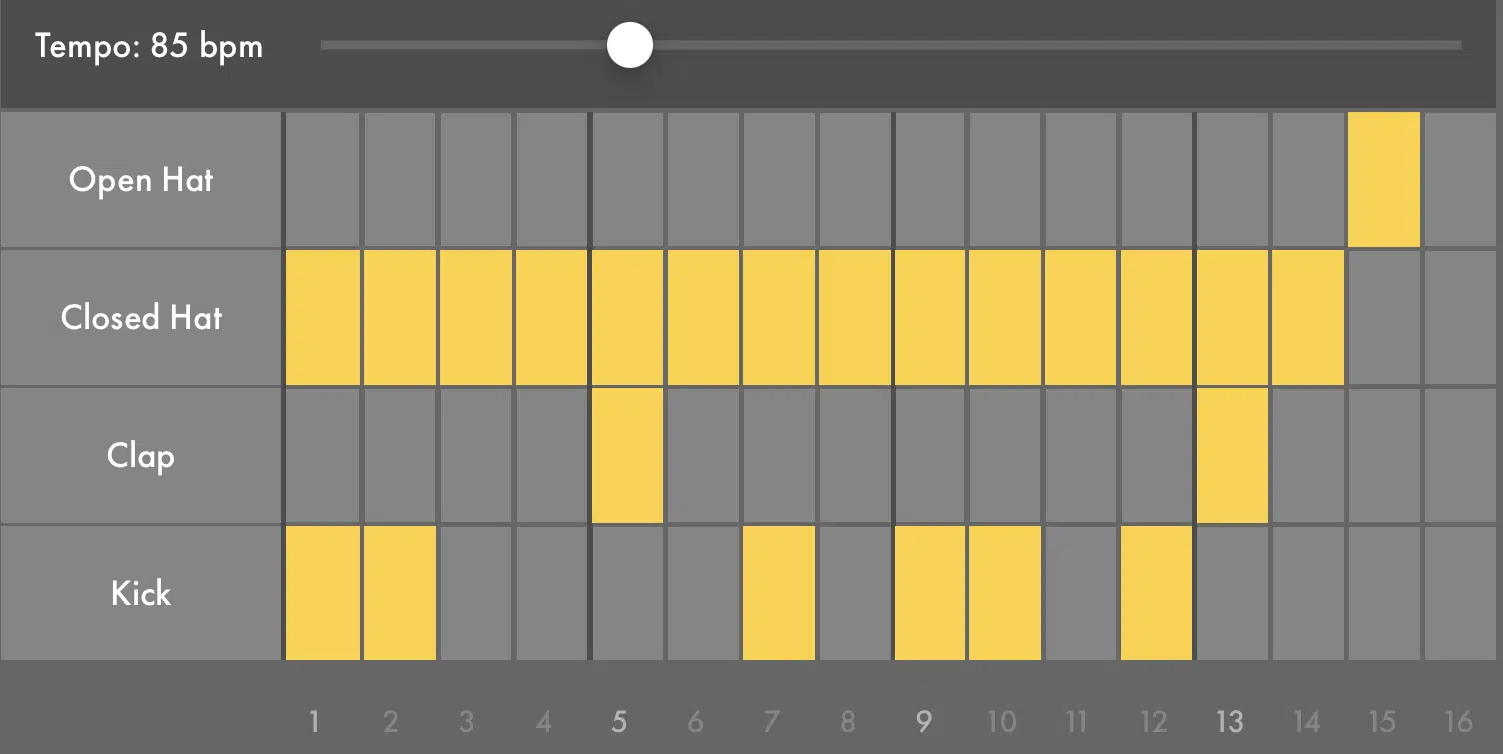
The difference between closed and open hi-hats is paramount in digital music production.
Knowing what they are can significantly enhance your patterns and unique beats.
- Closed hi-hats 一 Provide short, controlled sounds often used for quicker rhythms.
- Open hi-hats 一 Offer a sustained, resonant sound. They can provide a sense of brightness, tightness & precision.
By programming or playing varying degrees of openness, you can create rhythmic tension and release.
For example, a common technique in house music is to place an open hi-hat on the off-beat.
This provides that signature “pumping” feel.
And it’s not just about rhythm… it’s about the overall tone too.
PRO TIP: Experiment with transitioning from closed to open hi-hats in your hi-hat pattern, and notice how it dramatically changes the groove and feel of your track.
-
The Significance of Hi-Hat Cymbals in Electronic Beats
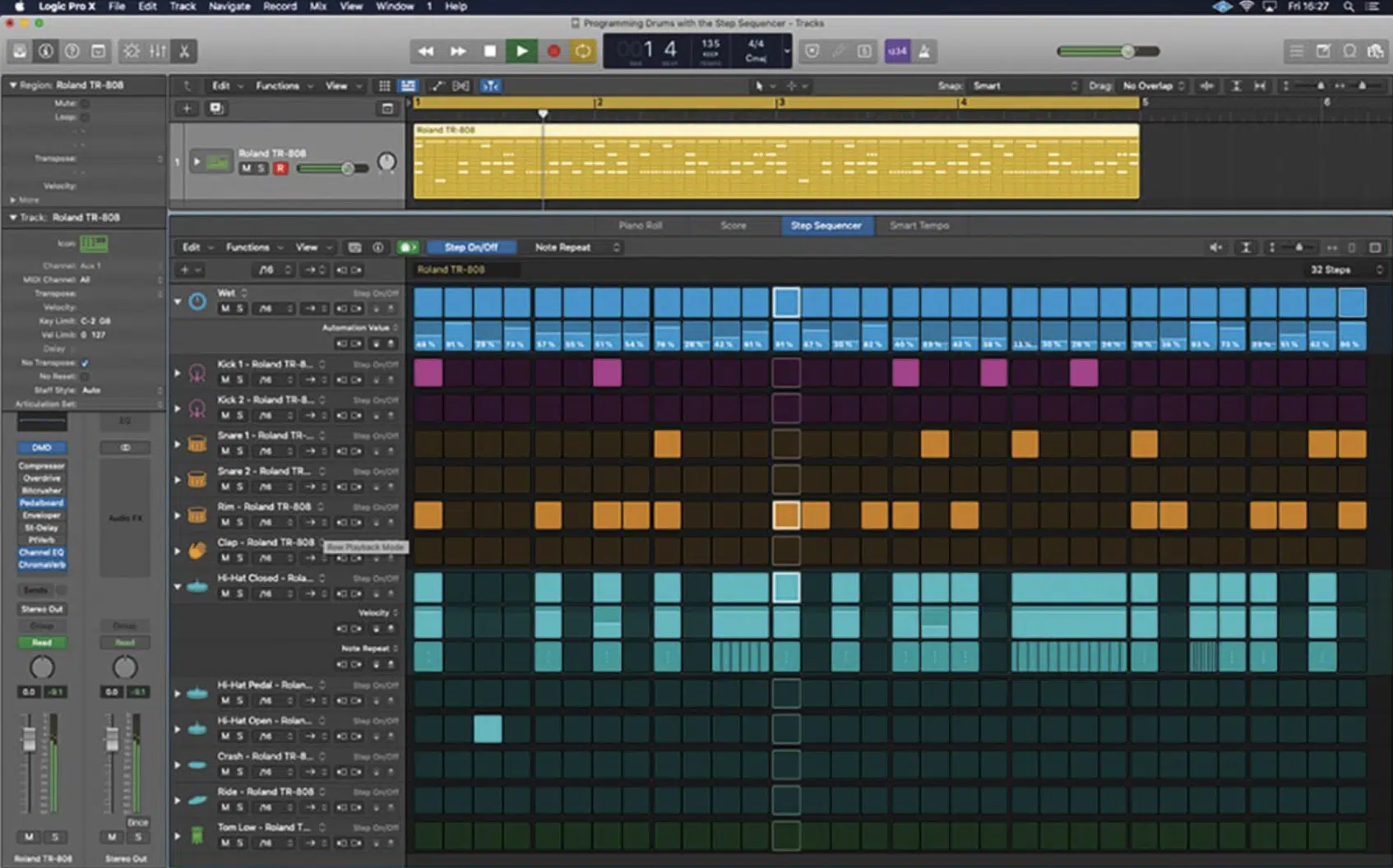
In electronic beats, hi-hat cymbals aren’t just rhythmic placeholders; they are instrumental in dictating the genre.
Your hi-hat cymbal can give your beat its identity by manipulating its:
- The texture
- Pitch
- Playing style
For example, a bright, crisp hi-hat might suit a trance or techno track while a softer 一 mellow hi-hat might find its home in downtempo or chillwave.
The ways these hi-hats interact with other drums like the bass drum, kick drum, and snare drum can define a genre.
PRO TIP: Pay close attention to the hi-hat cymbals in your favorite electronic tracks.
You’ll begin to notice patterns and styles that you can incorporate and innovate in your productions.
Lastly, don’t be afraid to layer hi-hats.
Combining two cymbals can give you a unique sound, providing your beat with a distinct sonic fingerprint.
-
The Magic Behind Untraditional Time Divisions
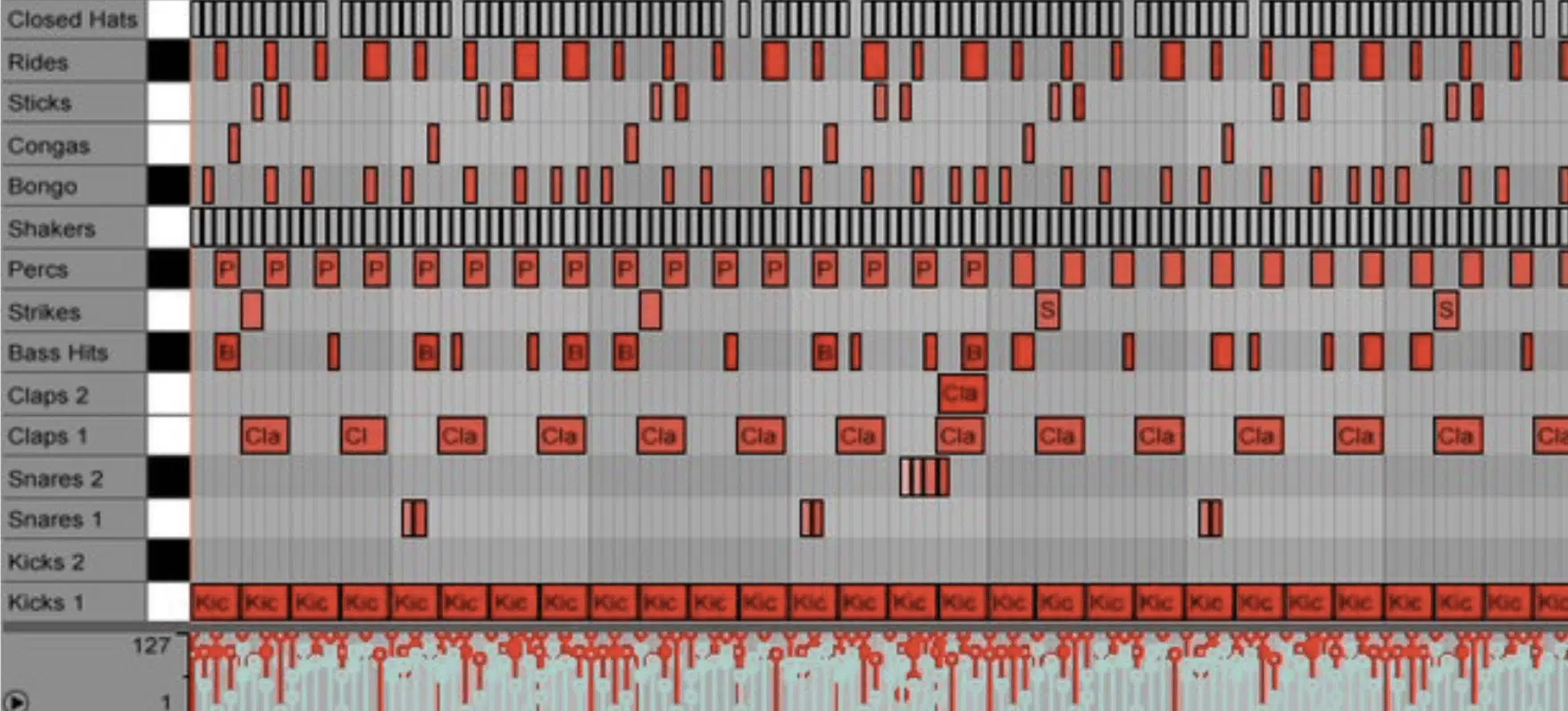
The typical 4/4 beat structure is standard, but what if we play a bit with time?
Diving into untraditional time divisions can lead to innovative and captivating rhythms.
Consider the beauty of using triplets in a hi-hat pattern…
It introduces a rolling feel, a sort of rhythmic “stumble” that can be hypnotic.
NOTE: Genres like dubstep or swing heavily leverage these off-kilter rhythms.
Also, make sure to experiment with dotted notes or syncopation.
They can add an unexpected twist to your hi-hat patterns 一 making the listener’s ears perk up.
The element of surprise (when done right) can elevate your track from basic to unforgettable.
Remember, music thrives on tension and release.
Playing with time divisions in your hi-hat patterns is an excellent tool for creating this particular dynamic.
-
Rhythmically Transforming Your Hi-Hats In Your Piano Roll
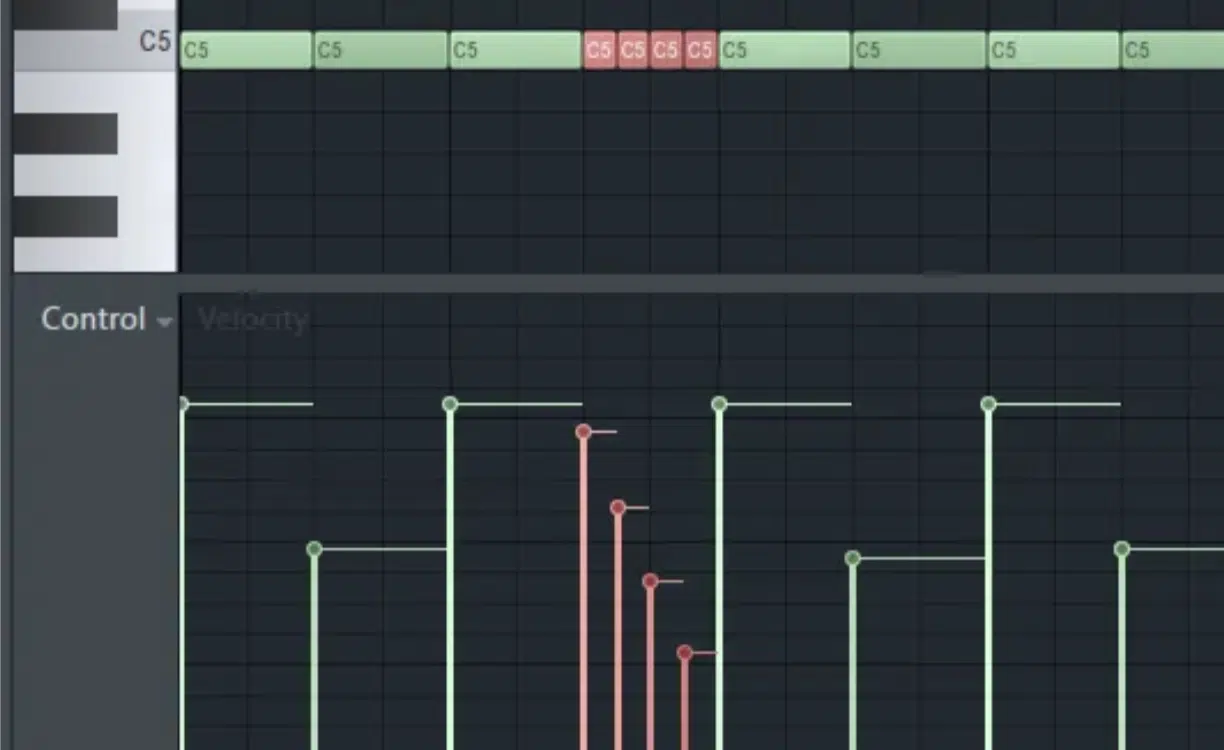
Most DAWs come with a piano roll, a powerful tool to visually and rhythmically shape your hi-hats.
Instead of sticking with static, straight rhythms, try to introduce some groove.
By slightly shifting your hi-hats off the grid, you can introduce a “swing” to your beats, which humanizes your pattern.
In essence, it makes them feel less robotic and more organic.
Use the velocity tool to change the intensity of each hi-hat hit.
This can emulate a real drummer’s playing style, where every hit isn’t the same intensity.
PRO TIP: Duplicate your hi-hat track, pan one left and the other right, and slightly shift the rhythm of one.
This creates a wide, stereo hi-hat pattern that can fill out the sonic space beautifully.
Crafting Distinctive Hi-Hat Patterns
Hi-hats are the chameleons of percussion, so to speak.
Their patterns can seamlessly transition between genres 一 and their sonic signature can be molded to fit any track.
Let’s see how hi-hats have carved a niche in different music styles and how they can be uniquely shaped.
-
Hip Hop Hi-Hat Patterns: A Deep Dive
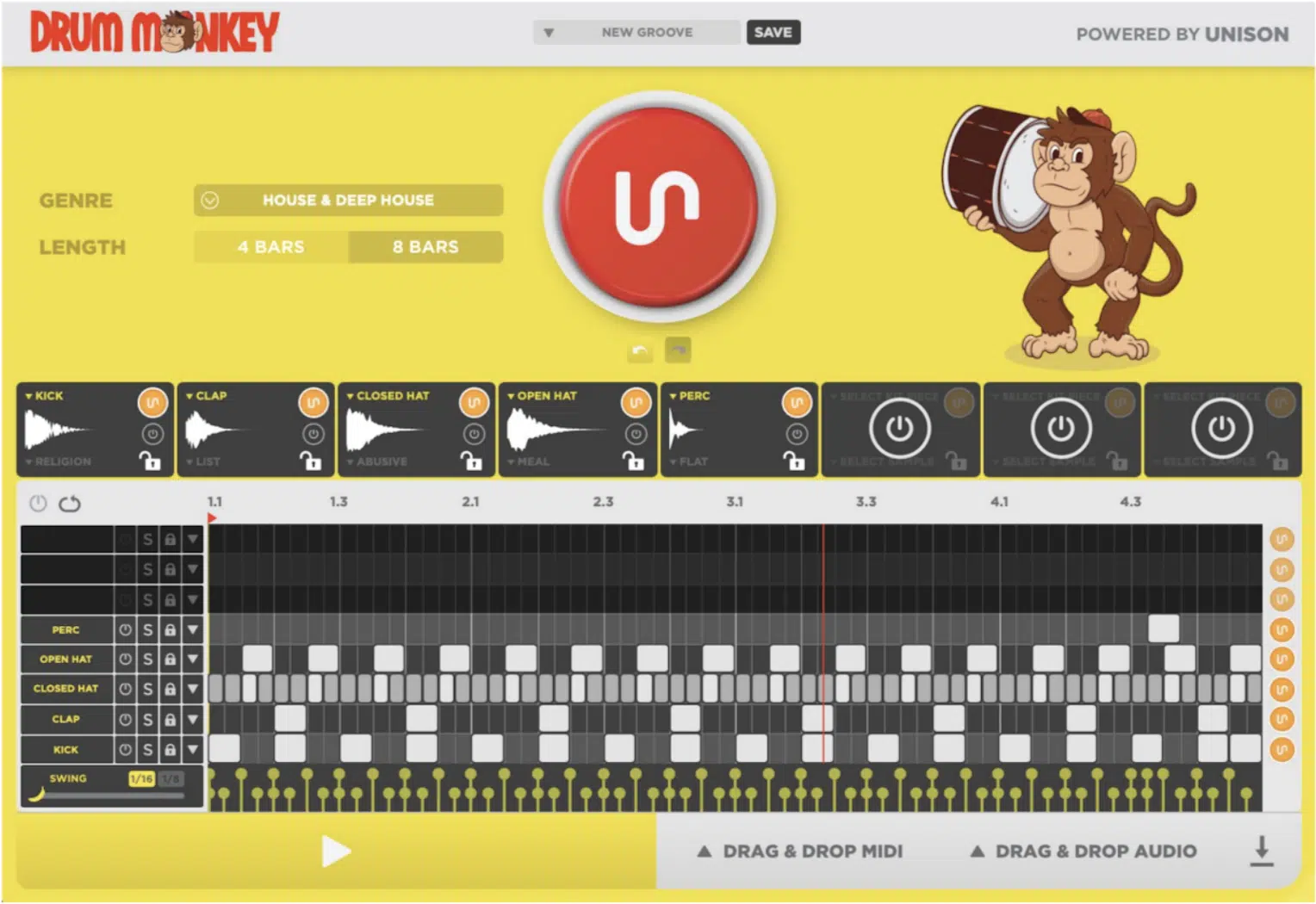
Drum Monkey by Unison Audio
Hip-hop has a long-standing romance with hi-hats.
They’re the heartbeat of many tracks and deliver rhythmic complexities that shape the song’s groove.
They’ve come a long way from the simple, steady patterns of early hip-hop.
Today’s trap sub-genre, a derivative of hip-hop, is notable for its machine-gun-like hi-hat rolls.
In quick succession, try utilizing:
- 16th
- 32nd
- 64th note patterns
This way, you’ll be able to see a unique rhythmic texture unfold.
These rapid stutters contrast beautifully with slower-paced beats 一 providing an almost paradoxical rhythm.
Yet, not all hip-hop hi-hats are about speed.
Boom bap, for example, leans heavily on the swing of its hi-hats.
By placing hi-hats slightly off the grid in your DAW, you get a laid-back, groovy feel synonymous with the streets of New York from the ’90s.
If you’re looking to further experiment, try interspersing classic hip-hop hi-hat rhythms with modern trap rolls.
This blending of old and new can result in a refreshing sound that pays homage while innovating.
-
Adapting Hi-Hats for Various Musical Genres
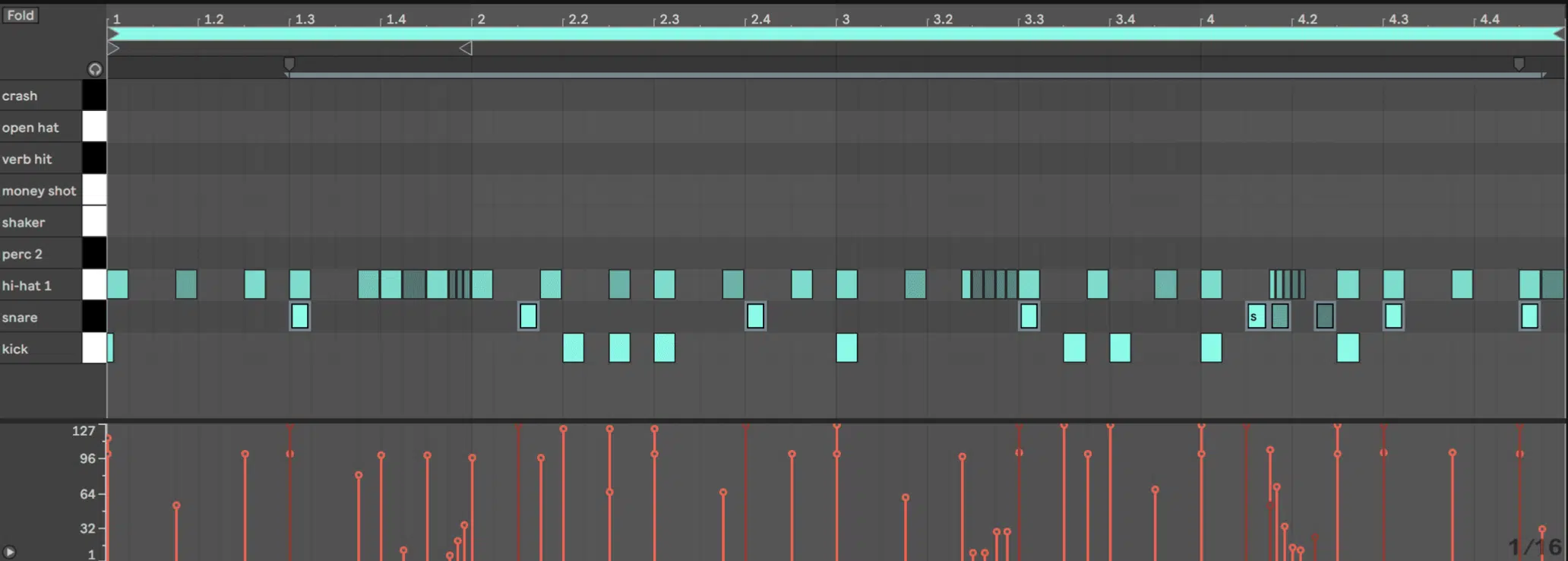
Every genre has its flavor, and your hi-hat needs to adapt accordingly.
What works for hip-hop might be out of place in a country track or rock track.
In rock 一 Hi-hats often have a raw, open sound with longer decays.
You can achieve this by layering an open hi-hat sample with a closed one; adding depth and simulating a half-open hi-hat cymbal.
For jazz 一 Subtlety is key.
Jazz drummers often play with brushes, producing a softer, swishy hi-hat tone.
To recreate this, reduce the high frequencies using EQ and experiment with layering soft, shaker-like samples with your hats.
Electronic music genres 一 Always value uniqueness and creativity.
Don’t be afraid to process your hi-hats with:
With them, you can achieve that avant-garde sound.
From techno’s crisp, short-decay hats to trance’s reverberated ones, always keep the genre’s spirit in mind.
-
Shaping Sound: Take Your Hi-Hats From Dull & Cold to Crisp & Warm
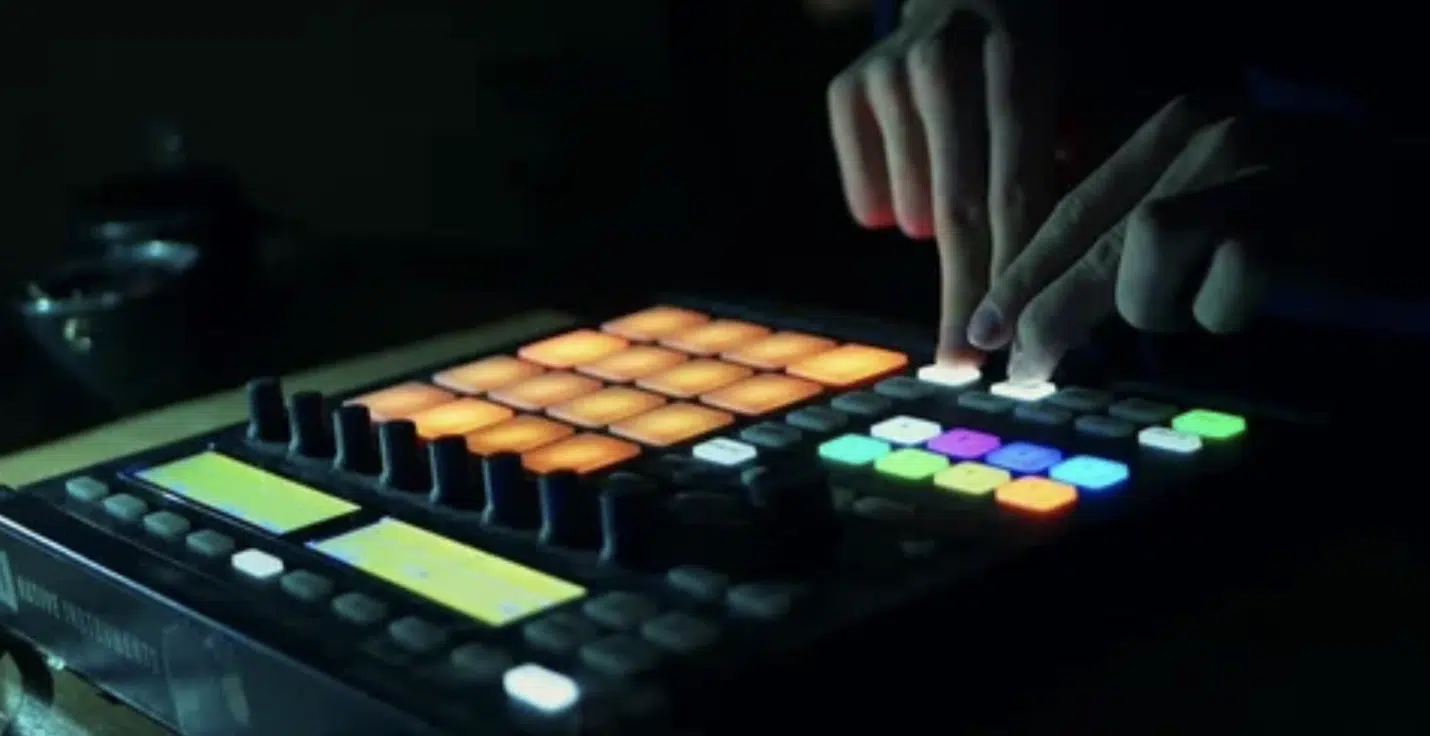
Sound-shaping is where the magic happens.
The raw sound of a hi-hat can often feel out of place in a mix, but with the right tools, you can mold it to perfection.
Equalization (EQ) is your first stop.
By cutting unwanted frequencies and boosting the characteristic ‘shimmer’ frequencies, you can make your hi-hats shine.
TIP: A slight boost around 5-10kHz can add that ‘crisp’ quality while cutting below 200Hz ensures they don’t muddy the mix.
Compression is another powerful tool. By compressing hi-hats, you can ensure they sit consistently in the mix.
However, be cautious, as over-compression can kill the dynamic range and make them sound lifeless.
Use gentle ratio settings and adjust the attack and release times for the best results.
Harmonic excitement and saturation can add extra warmth or character.
These processes introduce subtle harmonics 一 making the hi-hats feel richer and more analog.
Saturation, especially, can turn a sterile digital hi-hat into a vintage-sounding gem.
It’s reminiscent of old drum machines or vinyl recordings.
Advanced Techniques for a Stand-Out Track
Once you’ve grasped the basics, it’s time to venture into more advanced terrain.
Leveraging cutting-edge drummer techniques can help your hi-hats (and your tracks) truly stand out.
-
Resynthesizing Your Hats: Physically Modeling Any Live Hi-Hat & Cymbals
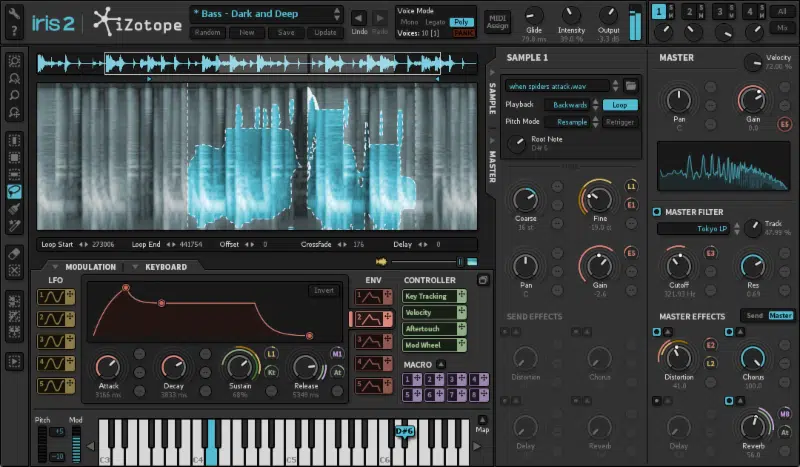
Resynthesizing is one of the cutting-edge techniques taking the music world by storm.
By sampling live hi-hat cymbals and then utilizing software tools, you can recreate or even morph their original sound.
This technique offers an organic feel that’s hard to achieve with pure digital synths.
One trick I’ve found invaluable is sampling several variations of the same hi-hat cymbal hit:
- Soft
- Medium/heavy
- Hard
Then, using tools like Ableton’s Sampler or Logic’s EXS24, you can map these samples across different velocity ranges for a non-traditional finish.
The result?… A more dynamic hi-hat that reacts to your MIDI controller’s touch.
For those wanting to dive even deeper, look into physical modeling plugins.
These allow you to tweak the characteristics of your hi-hat cymbal 一 altering size, shape, and even material.
Imagine transforming a 14-inch bronze hi-hat into an 18-inch titanium monster with just a few clicks!
If you’re after that authentic feel, don’t be afraid to combine real samples with modeled ones.
This layering can create depth and richness and make your hats stand out in any mix.
-
Tips to Integrate Hi-Hats Seamlessly into the Mix
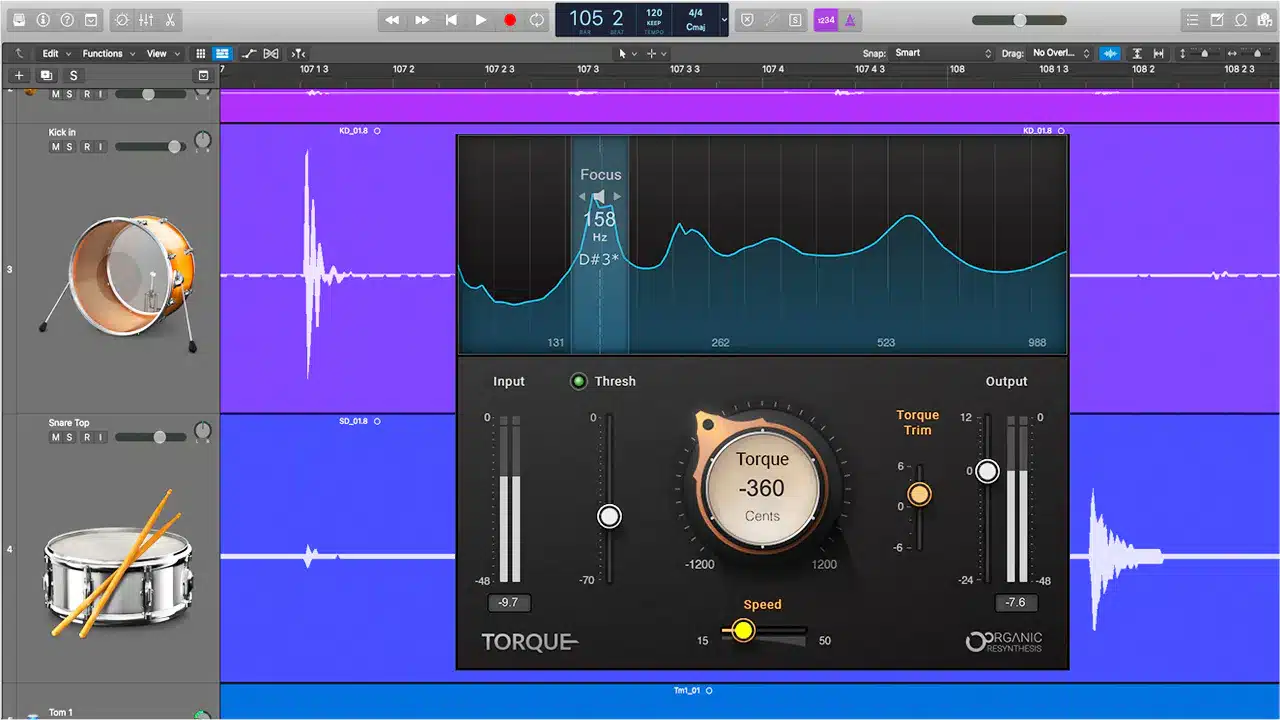
Mixing, as you know, is a delicate art, and ensuring your hi-hats find their rightful place is crucial.
- A cluttered mix 一 Can drown them out.
- A sparse arrangement 一 Might make them too dominant.
The first step is panning.
Hi-hats typically sit slightly to the left or right in a stereo mix, mimicking a drummer’s positioning.
Try panning them around 15-30% to one side, but always trust your ears and the track’s vibe.
Next, consider their frequency relationship with the snare drum and bass drum.
Employ a spectrum analyzer to see where each instrument sits, and carve out a small frequency niche for the hats by using EQ.
This ensures clarity and prevents muddiness.
Reverb is another powerful tool; a subtle room reverb can place your hi-hats in a “space,” making them feel more integrated.
However, being cautious is not just a good idea, it’s vital.
Too much reverb can push them back in the mix, losing their rhythmic impact.
-
Rhythm & Accent: The Unsung Heroes
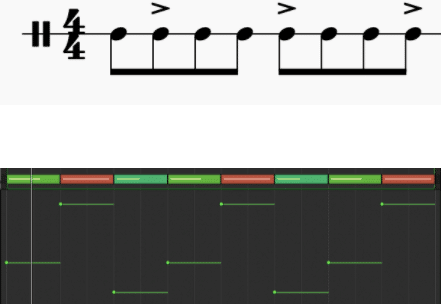
When we talk about rhythm, it’s easy to focus solely on the beat.
But rhythm is nuanced, and tiny little changes can have a super huge impact.
Accenting is another key element.
By emphasizing certain hi-hat hits, you can create syncopated patterns that breathe life into a track.
For example, instead of a straight 1/8 note pattern, try accenting every third hit.
This “triplet” feel can be the secret sauce in genres like jazz or blues.
Velocity plays a huge role too, and software like FL Studio’s Piano Roll allows for detailed velocity editing.
By altering the velocity of successive hi-hat hits, you can emulate a real drummer’s touch 一 making your hats groove and sway.
Lastly, don’t forget swing!
Many DAWs have a global swing setting that can be applied to MIDI patterns.
This can push hi-hats slightly off-grid which, in turn, adds groove.
Be it hip-hop, house, or techno, swing can be the rhythmic twist your track craves.
-
Bonus: Hi-Hat Pedals (For Live Drummers)
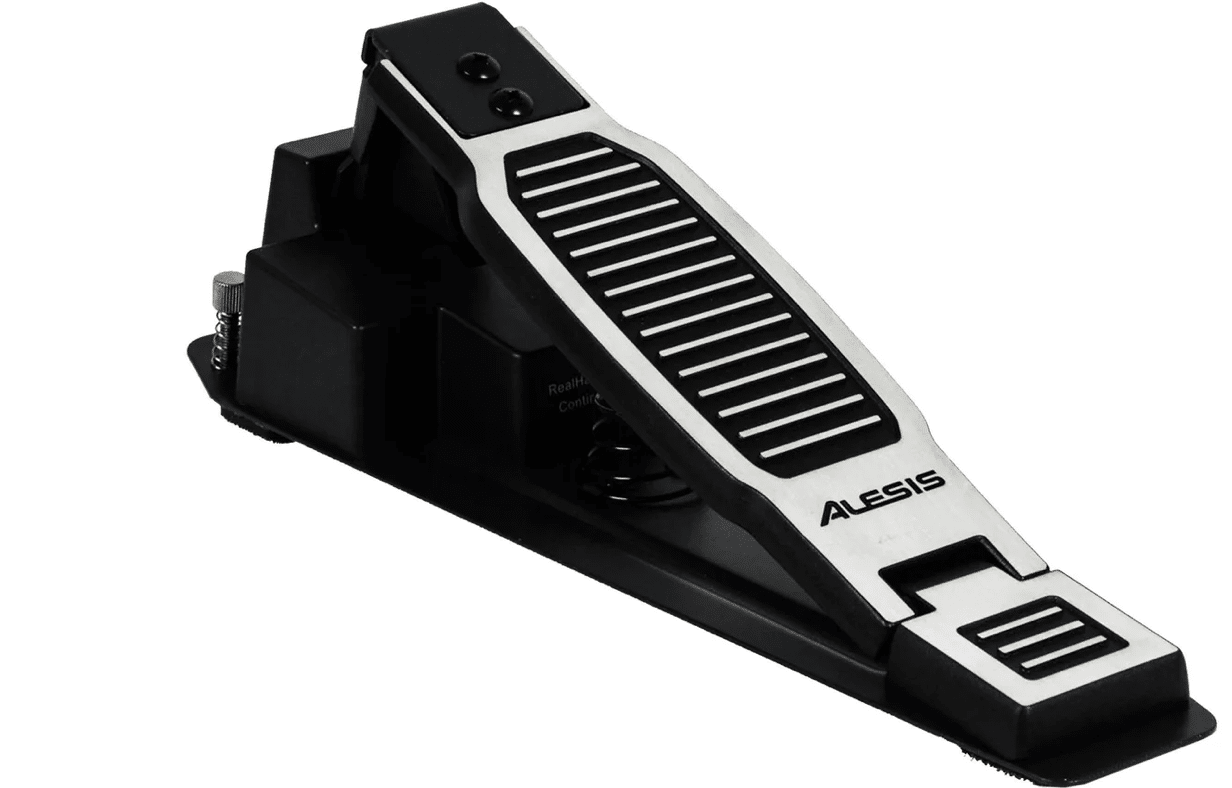
Ever wondered how drummers achieve that defined (and instantly recognizable) chick sound?
It’s not just about the hi-hats themselves 一 it’s also the dance between the drummer’s foot and the hi-hat pedal.
Today’s hi-hat pedals come in a range of options tailored to various musical styles and skill levels.
Now, if you’re thinking of venturing into professional cymbal ranges, the brilliance of your hi-hats (whether it’s a pair of hi-hats or the top cymbal) becomes paramount.
Not only does it affect the auditory experience, but the visual appeal as well.
Brilliant finish cymbals, for instance, don’t just offer a brighter and cutting sound but also stand out with a dazzling appearance, and serve as the cherry on top of your drum kit.
Speaking of drum kits, if you’d like to discover the dopest drum kits ever, we’ve got you covered.
PRO TIP FOR LIVE DRUMMERS: while the hi-hat often takes center stage, never underestimate the synergy between it and the ride cymbal.
When you play them in tandem, the hi-hat’s defined chick sound can beautifully complement the wash of a ride.
This creates a rhythmic structure that feels organic and full of life.
Remember, it’s the fine details that can elevate your sound from good to professional.
So, whether you’re playing in your home studio or on a grand stage, treat your hi-hat pedal and cymbals with the respect they deserve.
Hi-Hats: Final Thoughts
As you now see, hi-hats are so much more than just rhythmic background noise in a track.
They possess the power to infuse life, drive emotion, and solidify a song’s identity.
Their subtle intricacies and distinctions craft sonic textures that can spell the difference between an amateur track and a chart-topper.
If you want to leap straight into producing with quality hi-hat patterns, the Free Essential MIDI Hi-Hat Rolls is an absolute game-changer!
This pack doesn’t just offer MIDI files 一 it provides 10 field-tested rolls designed for creating consistent, radio-worthy drum patterns.
It’s a great tool for any digital music producer and blends the theory we’ve discussed with ready-to-use practicality.
With your newfound knowledge and the right tools at your disposal, your tracks have the ability to truly stand out in a saturated music industry.
Remember, while the landscape of electronic music continually evolves, the importance of a fire hi-hat game remains solid.
Until next time…







Leave a Reply
You must belogged in to post a comment.